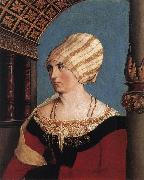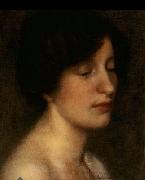Wholesale Oil Painting No Minimum |
|||||||||||
|
|
|||||||||||

|
|||||||||||
|
|
|
||||||||
HOLBEIN, Hans the YoungerGerman painter (b. 1497, Augsburg, d. 1543, London). Hans Holbein the Younger, born in Augsburg, was the son of a painter, Hans Holbein the Elder, and received his first artistic training from his father. Hans the Younger may have had early contacts with the Augsburg painter Hans Burgkmair the Elder. In 1515 Hans the Younger and his older brother, Ambrosius, went to Basel, where they were apprenticed to the Swiss painter Hans Herbster. Hans the Younger worked in Lucerne in 1517 and visited northern Italy in 1518-1519. On Sept. 25, 1519, Holbein was enrolled in the painters' guild of Basel, and the following year he set up his own workshop, became a citizen of Basel, and married the widow Elsbeth Schmid, who bore him four children. He painted altarpieces, portraits, and murals and made designs for woodcuts, stained glass, and jewelry. Among his patrons was Erasmus of Rotterdam, who had settled in Basel in 1521. In 1524 Holbein visited France. Holbein gave up his workshop in Basel in 1526 and went to England, armed with a letter of introduction from Erasmus to Sir Thomas More, who received him warmly. Holbein quickly achieved fame and financial success. In 1528 he returned to Basel, where he bought property and received commissions from the city council, Basel publishers, Erasmus, and others. However, with iconoclastic riots instigated by fanatic Protestants, Basel hardly offered the professional security that Holbein desired. In 1532 Holbein returned to England and settled permanently in London, although he left his family in Basel, retained his Basel citizenship, and visited Basel in 1538. He was patronized especially by country gentlemen from Norfolk, German merchants from the Steel Yard in London, and King Henry VIII and his court. Holbein died in London between Oct. 7 and Nov. 29, 1543. With few exceptions, Holbein's work falls naturally into the four periods corresponding to his alternate residences in Basel and London. His earliest extant work is a tabletop with trompe l'oeil motifs (1515) painted for the Swiss standard-bearer Hans Baer. Other notable works of the first Basel period are a diptych of Burgomaster Jakob Meyer zum Hasen and his wife, Dorothea Kannengiesser (1516); a portrait of Bonifacius Amerbach (1519); an unsparingly realistic Dead Christ (1521); a Madonna and Child Enthroned with Two Saints (1522); several portraits of Erasmus, of which the one in Paris (1523 or shortly after), with its accurate observation of the scholar's concentrated attitude and frail person and its beautifully balanced composition, is particularly outstanding; and woodcuts, among which the series of the Dance of Death (ca. 1521-1525, though not published until 1538) represents one of the high points of the artist's graphic oeuvre. Probably about 1520 Holbein painted an altarpiece, the Last Supper, now somewhat cut down, which is based on Leonardo da Vinci's famous painting, and four panels with eight scenes of the Passion of Christ (possibly the shutters of the Last Supper altarpiece), which contain further reminiscences of Italian painting, particularly Andrea Mantegna, the Lombard school, and Raphael, but with lighting effects that are characteristically northern. His two portraits of Magdalena Offenburg, as Laïs of Corinth and Venus with Cupid (1526), |
||||||||
|
|
||||||||
Portrait of the Artist's Wife
Portrait of the Artist's Wife Painting ID:: 7519 |
c. 1517
Tempera on wood, 45 x 34 cm
Mauritshuis, The Hague c. 1517 Tempera on wood, 45 x 34 cm Mauritshuis, The Hague |
|||||||
|
|
||||||||
Thomas Cooper Gotch1854-1931 English Thomas Cooper Gotch Gallery In Newlyn he worked first at painting local scenes in the then-fashionable realist manner. But even these often had a romantic edge, such as The Wizard or an obvious love of surface colour. In 1891 a visit to Florence, Italy, opened his eyes to the work of the romantic European symbolists. He took the brave step of changing his style, to make romantic decorative paintings, when the prevailing fashion was against him. His first work in this new style was My Crown and Sceptre (1892), which was the progenitor to his most well-known work The Child Enthroned (1894). The latter, on original exhibition, was hailed by The Times newspaper as the star of that year's Royal Academy show. Until that time, his new style of work had drawn much critical scorn. He painted religious Christian scenes, history painting, portraits, and a few landscapes. His best-known paintings, which form the bulk of his work, usually portray girl-children in ornate classical or medievalist dress. The appearance of the girls in his paintings is often noted as being very modern. Gotch was a close and lifelong friend of Henry Scott Tuke, whose work featured a parallel focus on the boy-child. Gotch's lifelong adoration of the beautiful girl-child was shared by other Victorian giants such as John Ruskin and Lewis Carroll. His emotionally-charged work was immensely popular and critically acclaimed for most of his life, although interest in neo-romanticism waned after the First World War and he turned to watercolours of flowers. He also illustrated books, such as Round About Wiltshire, The Land of Pardons (an early study of Breton folklore & Celtic Christianity), and contributed illustrations to school readers such as Highroads of Literature. A retrospective show was held in Newcastle in 1910, and a memorial exhibition in Kettering in 1931. |
||||||||
|
|
||||||||
|
|
Portrait of the artist's wife
Portrait of the artist's wife Painting ID:: 87035 |
Oil on canvas. 25 11/16 in. x 20 1/2 in. (65.28 cm x 52.07 cm). Memorial Art Gallery, Rochester, New York.
Date Painted approximately 1897
cyf Oil on canvas. 25 11/16 in. x 20 1/2 in. (65.28 cm x 52.07 cm). Memorial Art Gallery, Rochester, New York. Date Painted approximately 1897 cyf |
||||||
|
|
||||||||
|
Thomas Cooper Gotch 1854-1931 English Thomas Cooper Gotch Gallery In Newlyn he worked first at painting local scenes in the then-fashionable realist manner. But even these often had a romantic edge, such as The Wizard or an obvious love of surface colour. In 1891 a visit to Florence, Italy, opened his eyes to the work of the romantic European symbolists. He took the brave step of changing his style, to make romantic decorative paintings, when the prevailing fashion was against him. His first work in this new style was My Crown and Sceptre (1892), which was the progenitor to his most well-known work The Child Enthroned (1894). The latter, on original exhibition, was hailed by The Times newspaper as the star of that year's Royal Academy show. Until that time, his new style of work had drawn much critical scorn. He painted religious Christian scenes, history painting, portraits, and a few landscapes. His best-known paintings, which form the bulk of his work, usually portray girl-children in ornate classical or medievalist dress. The appearance of the girls in his paintings is often noted as being very modern. Gotch was a close and lifelong friend of Henry Scott Tuke, whose work featured a parallel focus on the boy-child. Gotch's lifelong adoration of the beautiful girl-child was shared by other Victorian giants such as John Ruskin and Lewis Carroll. His emotionally-charged work was immensely popular and critically acclaimed for most of his life, although interest in neo-romanticism waned after the First World War and he turned to watercolours of flowers. He also illustrated books, such as Round About Wiltshire, The Land of Pardons (an early study of Breton folklore & Celtic Christianity), and contributed illustrations to school readers such as Highroads of Literature. A retrospective show was held in Newcastle in 1910, and a memorial exhibition in Kettering in 1931. Portrait of the artist's wife Oil on canvas. 25 11/16 in. x 20 1/2 in. (65.28 cm x 52.07 cm). Memorial Art Gallery, Rochester, New York. Date Painted approximately 1897 cyf |
||||||||
|
|
||||||||
|
Prev Next
|
||||||||
|
|
||||||||
|
Related Paintings to Thomas Cooper Gotch :. |
||||||||
|
|
||||||||
|
CONTACT US |


